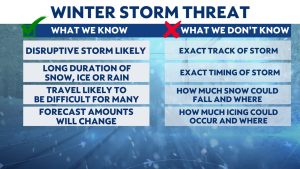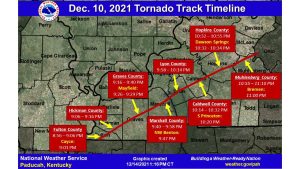All eyes are on the Federal Reserve Wednesday as the Central Bank appears poised to raise interest rates again in an effort to fight the worst inflation in four decades.
The Fed on Wednesday is expected to announce a three-quarter-point hike in its key short-term rate — its fourth straight increase, and sixth this year — which will lead to still-higher loan rates for many businesses and consumers
What many Fed-watchers hope is that Chair Jerome Powell will hint at a news conference that the central bank may ease the pace of its hikes, perhaps to a half-point in December and two quarter-point hikes next year.
Even at that more moderate pace, the central bank’s benchmark rate would reach 4.75% to 5%, which would be its highest range since 2007, up from the current 3% to 3.25%. Fed officials have stressed that they need to sharply raise rates to tame inflation, which reached 8.2% in September from 12 months earlier, barely below a 40-year high. Chronic inflation has also become a central point of attack for Republicans against Democrats in the midterm congressional elections.
So far this year, the Fed has raised its key rate five times in an aggressive pace that has sent borrowing rates surging across the economy and heightened the risk of a recession. The home market, in particular, has been badly bruised as a consequence. The average rate on a 30-year fixed mortgage, just 3.14% a year ago, surpassed 7% last week, mortgage buyer Freddie Mac reported. Sales of existing homes have dropped for eight straight months.
One reason the Fed’s policymakers might feel they can soon slow the pace of their rate hikes is that some early signs suggest that inflation could start declining in 2023. Consumer spending, squeezed by high prices and costlier loans, is barely growing. Supply chain snarls are easing, which means fewer shortages of goods and parts. Wage growth is plateauing, which, if followed by declines, would reduce inflationary pressures.
Still, the job market remains consistently strong, which could make it harder for the Fed to cool the economy and curb inflation. On Tuesday, the government reported that companies posted more job openings in September than in August. There are now 1.9 available jobs for each unemployed worker, an unusually large supply.
A ratio that high means that employers will likely continue to raise pay to attract and keep workers. Those higher labor costs are often passed on to customers in the form of higher prices, thereby fueling more inflation.
Lawmakers urge caution
A number of Democrats in recent weeks have appealed directly to Chair Powell, urging him to exercise caution when it comes to the central bank’s string of interest rate hikes.
Ohio Sen. Sherrod Brown, the chairman of the Senate Banking Committee, and Colorado Sen. John Hickenlooper, who himself is a small business owner, each sent letters to Powell urging the agency not to be overzealous when it comes to fighting inflation.
“For the first time in decades, we have seen historic job growth, and workers have begun to see wage gains, gains that your prior actions to stabilize the economy helped achieve,” wrote Brown, who earlier this year backed Powell for a second term as Fed chair. “Yet, many workers and their families are struggling under the weight of inflation.”
“Maintaining full employment while reducing inflation is central to protecting the workers who power our economy,” he added.
Two days later, Hickenlooper wrote a letter of his own to Powell, noting that while “high inflation necessitates a response,” there are concerns that “the Fed is doing too much too soon” and that the central bank should “wait to see the effects on the economy and how those changes are absorbed.”
Hickenlooper called raising rates “the Fed’s bluntest tool” to combat rising inflation, adding that “it has wielded that hammer repeatedly.”
“However, after five straight rate increases by the Fed, I worry any additional action will undermine economic growth and harm American families,” Hickenlooper wrote Thursday, adding: “Raising rates now when prices may come down would be foolish and damaging to American consumers and small businesses.”
Unlike Hickenlooper, Brown did not explicitly call on the central bank to cease raising rates, but rather expressed concern that the Fed may be moving too quickly without analyzing the impact of its actions.
“Monetary policy tools take time to reduce inflation by constraining demand until supply catches up – time that working-class families don’t have,” Brown wrote, adding: “We must avoid having our short-term advances and strong labor market overwhelmed by the consequences of aggressive monetary actions to decrease inflation, especially when the Fed’s actions do not address its main drivers.”
While Chairman Powell has faced criticism from fellow members of the Democratic party, like progressives Rep. Ro Khanna, D-Calif., and Elizabeth Warren, D-Mass., the Federal Reserve divorces its monetary policy actions from politics. President Joe Biden has emphasized the need for the Fed to act independently, a departure from the stance of his predecessor.
“My plan to address inflation starts with the simple proposition: Respect the Fed, respect the Fed’s independence, which I have done and will continue to do,” Biden said in a meeting with Powell earlier this year.
Impact on the markets
If Powell does signal Wednesday that the Fed may lift its foot slightly off the economic brakes, it could spark a rally in stock and bond prices. Such higher asset prices, though, might then fuel more spending just when the Fed wants to cool things down to throttle inflation.
U.S. futures trading on Wall Street appeared to be in a holding pattern ahead of the Fed decision. Futures for the Dow Jones industrials were unchanged and the S&P 500 rose less than 0.1%..
To offset any potential burst of optimism, the Fed may signal at its next meeting in December that it expects to add at least another rate hike early next year. That would serve to make borrowing even more expensive and would further heighten the risk of a recession.
Ultimately, economists at Goldman Sachs expect the Fed’s policymakers to raise their key rate to nearly 5% by March. That is above what the Fed itself had projected in its previous set of forecasts in September.
For now, many Fed officials have said they see few signs that inflation is easing in any sustainable way. They point, in particular, to so-called core inflation, which excludes volatile food and energy costs and is considered a good reflection of underlying price pressures.




